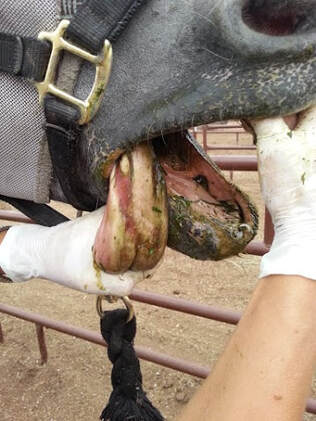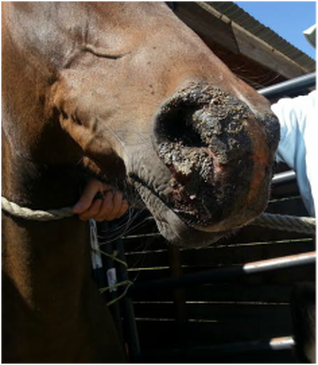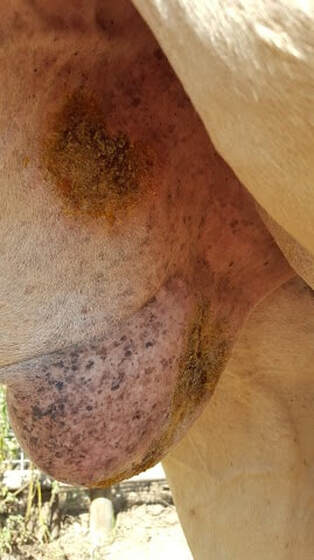|
Vesicular stomatitis is caused by a virus and affects horses and other livestock. The virus can be transmitted to humans and may cause flu-like disease. Vesicular stomatitis is seen only sporadically in the US. Outbreaks have historically occurred in all regions of the country, but since the 1980s have been limited to the southwestern states. Vesicular stomatitis viruses are prevalent in South America, Central America, and parts of Mexico but have not been seen naturally outside the Western hemisphere.
The virus can be transmitted through direct contact with infected animals that have signs of disease (those with sores) or by blood-feeding insects. In the southwestern US, black flies are the most likely carrier. In areas where this disease is common, sand flies are also known to transmit it. Excessive drooling is often the first sign of disease. Blisters in the mouth are rarely seen in naturally occurring cases because they rupture soon after formation. Ulcers and erosions of the mouth linings, shedding of the surface of the tongue, and ulcers at the junctions of the lips are commonly seen. Inflammation and erosions at the cushion of the hoof are sometimes observed; lameness soon follows. Crusting lesions of the muzzle, lower abdomen, the covering of the penis, and udder of horses are typical during outbreaks in the southwestern US. Loss of appetite due to mouth ulcers and lameness due to foot ulcers are normally of short duration, as the disease generally resolves within 2 weeks. However, reinfection can occur following a second exposure. Crusts and blisters around the lips and sores inside the mouth may be seen in horses with vesicular stomatitis. No specific treatment is needed. When infected animals are identified, they should be isolated until the disease has run its course. Other animals on the property should be restricted to the property to reduce the chance of the disease spreading. General ill health and malnutrition can be avoided by providing softened feeds. Cleaning ulcers with mild antiseptics may help avoid bacterial infections. To reduce the risk of exposure to the virus, owners may limit pasture time, provide shelters or barns during insect feeding times, and take other steps to reduce animal contact with insects. Your veterinarian can provide advice about insecticides that may be appropriate for use with horses. Vesicular stomatitis is a reportable disease in most areas, including the US. Veterinarians are required to notify animal health officials when it is suspected. |


